William Burwell Catlett (December 29, 1847-October 18, 1865)
Blog written by Sara Lewis, Fairfield Foundation Development Officer and lover of genealogy
The Catlett cemetery at Timberneck is the final resting place for many members of the Catlett’s extensive family. Our effort to preserve and interpret the house includes stewardship of the cemetery, and our goal is to explore the lives and stories of the family members buried there. As a Gloucester native with deep roots in Mathews County, I love local genealogy since I know I will run into the roots of childhood friends, if not my own family. I start this series of blog posts with the first name on the list of 11 burials, William Burwell Catlett, not only because his name is first on a list I was given, but because I wanted to know more about connections between the Catletts of Timberneck and the Burwells of Fairfield.
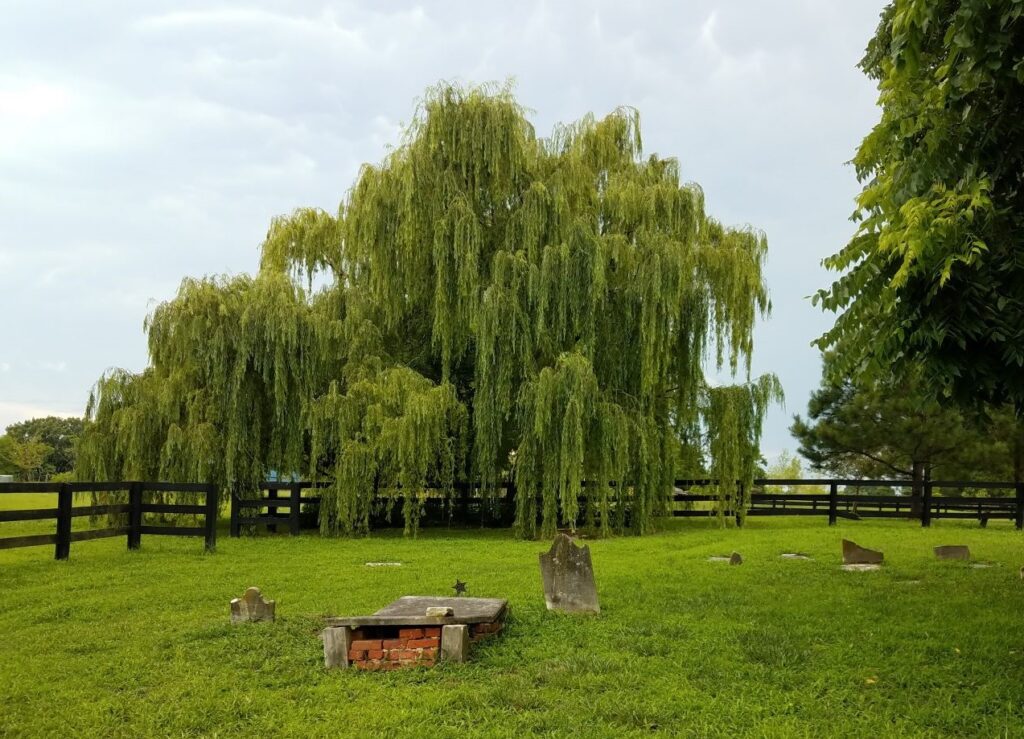
William Burwell Catlett was the seventh child of John Walker Carter Catlett (1803-1883) and grandson of John Catlett (1760-1808), who established the Catlett family at Timberneck. William was the second son of John W.C. Catlett’s second wife, Frances King Burwell. When Frances, who was born in Dinwiddie County, Virginia, married John, she brought her Burwell family line back to Gloucester. Her fifth great grandfather was Lewis Burwell I (1621-1653), the English emigrant and first of the name to reside at Fairfield Plantation in Gloucester. Frances and her son William descend through Lewis Burwell’s grandson, Lewis Burwell III (1694-1744), owner of Kingsmill Plantation in James City County. In the mid-18th century, his son Armistead Burwell (1718-1754) moved west to Virginia’s southern Piedmont. He was Frances King Burwell Catlett’s great grandfather.
Frances (known as “Fanny) married John W.C. Catlett in 1844. According to the 1850 U.S. Census, their household at Timberneck included John (46), Fanny (36), Sally Brown Catlett (22, a daughter by his first marriage), Charles (5), William (3), Mary (5 months), and Lucy Flowers (53, probably a relative or servant). John’s Timberneck real estate was valued at $12,000 and 37 enslaved people undertook much of the labor on the farm. Also at this time, John W.C. Catlett represented Gloucester and adjoining counties as a Virginia State Senator. By the time the 1860 U.S. Census was taken, John (56) listed his occupation as Attorney at Law. His real estate was valued at $24,000 and his personal property at $39,400, a total that included the value of the people he owned and enslaved. Fanny (45) was responsible for one stepson, John (24), who was a student of medicine, as well as her children Charles (15), William (13), Mary (10), Hetty (7), Powell (5), and Landon Carter (3). Lucy Flowers (64) was still part of the household, this time described as white with personal property valued at $500. In 1860, John W.C. Catlett enslaved 45 people on Timberneck farm, 14 of whom were described as mulattos, or individuals of mixed black and white parentage, a sad reminder of the abuse of slave women.
When the Civil War broke out in 1861 the Catletts sided with Virginia and the Confederacy. John (25) joined the 12th Virginia Regiment of the Confederate Army of Northern Virginia, according to an undated (c.1900) genealogy of the family.[i] Charles (16) joined a cavalry unit later consolidated as the 24th Virginia Cavalry. During the spring of 1862, the family could surely see and hear military activity on the south side of the York River from the front windows of their home related to the Peninsula Campaign battles at Yorktown and Williamsburg. There were also fortifications nearby in lower Gloucester and troop movements throughout the county. By the end of the campaign in August, U.S. forces had succeeded in occupying much of eastern Virginia, with a continued presence on land and waterways for the remainder of the war. In the fall of 1862, at just over 14 years and 8 months old, William Burwell Catlett enlisted in Company A of the 34th Virginia Infantry.
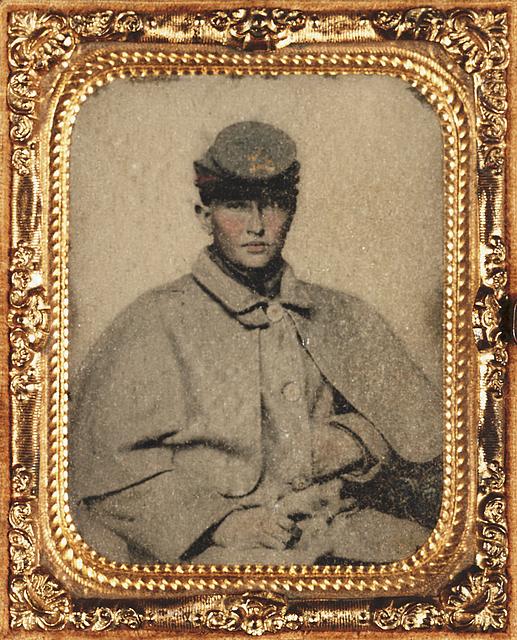
While enlistment age was 18, as many as 20% of soldiers were underage, like William. (Photo of a young Confederate soldier, Library of Congress, Washington D.C.)
In 1862, William’s regiment included 466 men who participated in campaigns around Richmond. Beginning in June 1864, they occupied trenches around Petersburg for 10 months, during the longest military event of the war, defending supplies that traveled along key roads and five railroads that came together there. If William had made it to Petersburg, he might have met my great-great grandfather Robert T. Lewis of Mathews, whose Petersburg saga I wrote about in my personal blog (https://ancestorconfessions.blogspot.com/2021/04/at-appomattox-mathews-men-including.html). But he did not. The Confederacy was losing a lot of troops and when William’s regiment surrendered at Appomattox in April 1865, the unit included only 14 officers and 210 men. In total, 28,000 Confederate soldiers surrendered at Appomattox. William’s older brother Charles Catlett, later heir to Timberneck, was among them. (https://www.nps.gov/apco/learn/historyculture/upload/parolelist-c1.pdf)
What happened to William? A little over fourteen months before the end of the war, on January 29, 1864, he was captured by Union troops in Gloucester and imprisoned in Yorktown. Records of Confederate Prisoners of War reconstructed several decades after the war list a W.B. Burwell, 5th Virginia Regiment, as captured in Gloucester, Virginia, on the same date, and this was probably our William.[ii] There were no noteworthy battles on that day, but it was likely cold with snow cover, as evidenced by a sketch that appeared in Harper’s Weekly. Extremes of rain, snow, and heat were significant factors during the Civil War, and swings in the weather and the hardship of weather events on soldiers were frequently recorded. One that hints at a particularly harsh winter around the time of William’s capture is a December snowball fight between soldiers in Georgia. Perhaps William had had enough of camping out in the cold, not to mention the horrors of war, and gone AWOL (absent without leave) to find some place warm. While researching my great-great grandfather’s Civil War service, I discovered that he walked home, too.
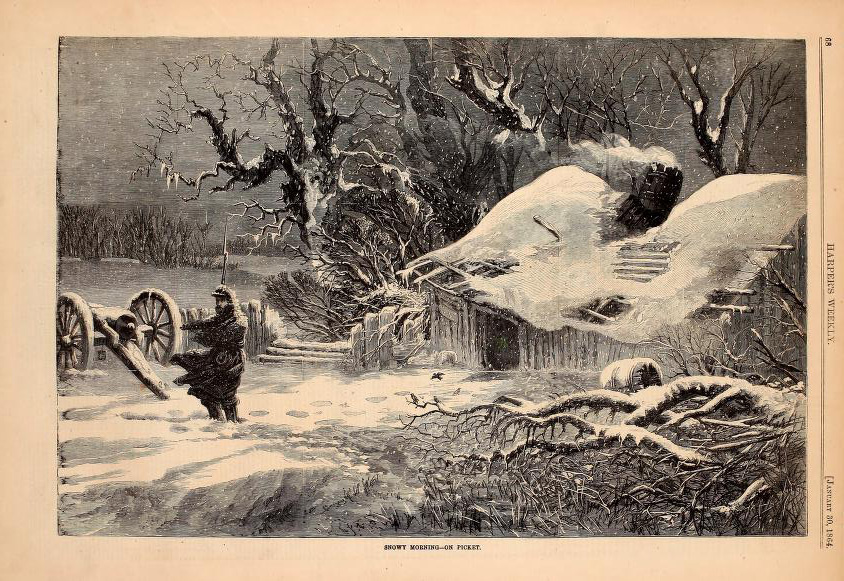
“Snowy Morning on Picket”, not attributed, Harper’s Weekly, page 68, January 30, 1864. The winter of 1863-64 was harsh.
William was transferred to Fort Monroe, Virginia, in February 1864 and then to Point Lookout, Maryland, in April. This final Union POW camp was noted for its crowded and miserable conditions. According to the National Park Service website (https://www.nps.gov/nr/travel/national_cemeteries/maryland/point_lookout_confederate_cemetery.html), Union prisons were filling up fast after the Battle of Gettysburg in July 1863. Perhaps due to its secure peninsular setting, the POW population at Point Lookout swelled from 1,700 to 9,000 in 1863. While William was there, the prison population grew to 15,500, well beyond the stockade’s capacity, and would reach 20,000 by the end of the war. Among the thousands held with William was another of my great-great grandfathers, Walter Gabriel Jones, and his brother Thomas A. Jones of Mathews, both with the 5th Virginia Cavalry (https://ancestorconfessions.blogspot.com/2021/03/band-of-brothers-jones-smith-and-billups.html).
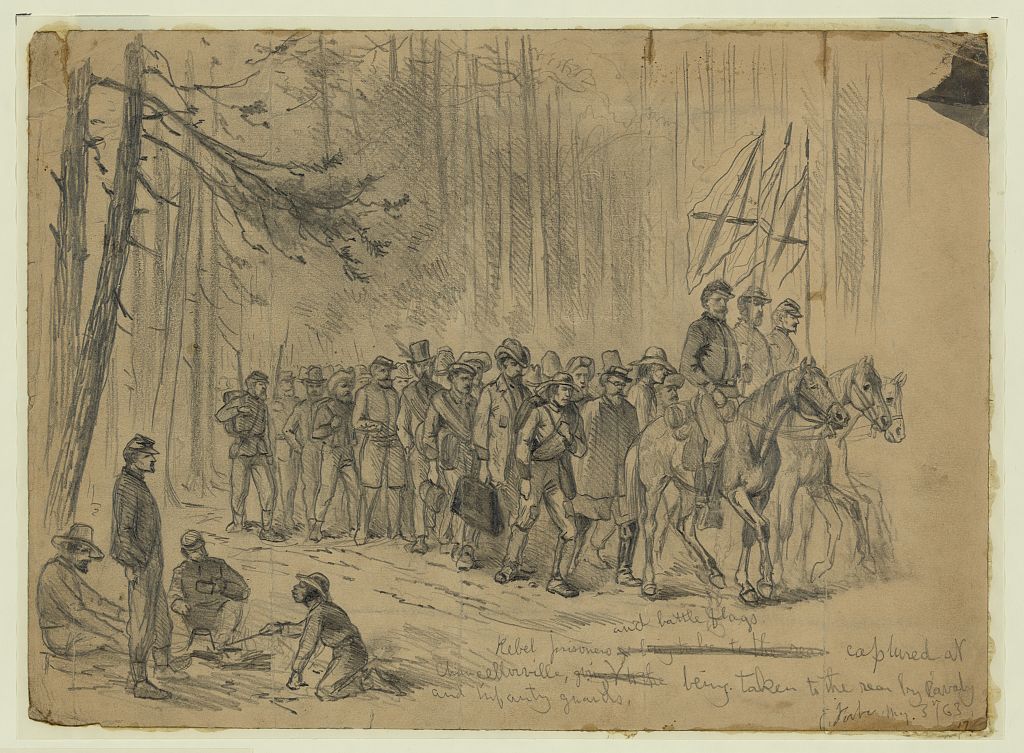
William was “exchanged,” or sent back to his unit in exchange for Union POWs, a year later, in January of 1865. Prisoner exchanges were adopted during the Civil War to lessen the issues (overcrowding, lack of sanitation, disease) and costs associated with maintaining and moving captured soldiers. But William became a prisoner once again before the April 9, 1865, surrender at Appomattox Court House. On April 30 at Mechanicsville, Virginia, he was paroled again, this time sent home with papers saying he was freed by the Union.
The deprivations of war and imprisonment – hunger, exposure, sickness – must have sent him home to Timberneck weak and vulnerable. William Burwell Catlett died on October 18, 1865, at the age of 17, and was buried beneath a weeping willow tree in the family plot close to their home.
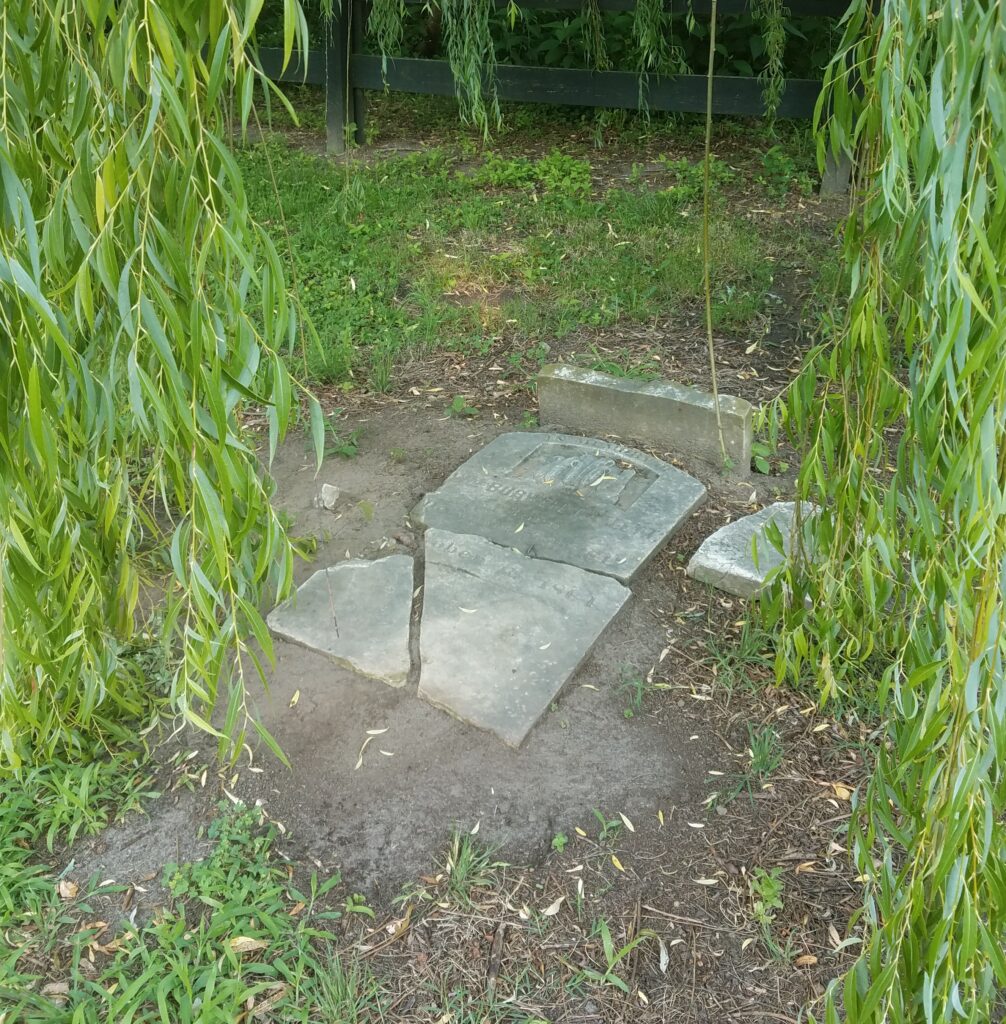
William Burwell Catlett’s grave. His date of death is chiseled in as 1864. Since William’s tombstone and his brother’s, Powell Burwell Catlett, are of the same design, the stones may have been made at the same time, after Powell’s death in 1894 when memories of young William were blurred. Obelisks are not commonly seen on tombstones until about 1880, according to Joanna Green, Cemetery Archaeologist with the
Virginia Department of Historic Resources.
Records regarding William’s half-brother, Dr. John T. Catlett, suggest he survived the war, moved to Kentucky, married, and lived for 30 more years. Brother Charles surrendered at Appomattox and returned to Timberneck, where five years later his father’s real estate was valued in the 1870 U.S. Census at $10,500 and personal estate at $1,511. Charles, who took over ownership of Timberneck after his father’s death, married Lucy Chiswell Nelson in 1887, had six children, and lived to be 72.
And the genealogy trail led home, just as I thought it would. The Catlett brothers are second cousins, four times removed, of my childhood friend, Marcia, whose son married my daughter ten years ago.
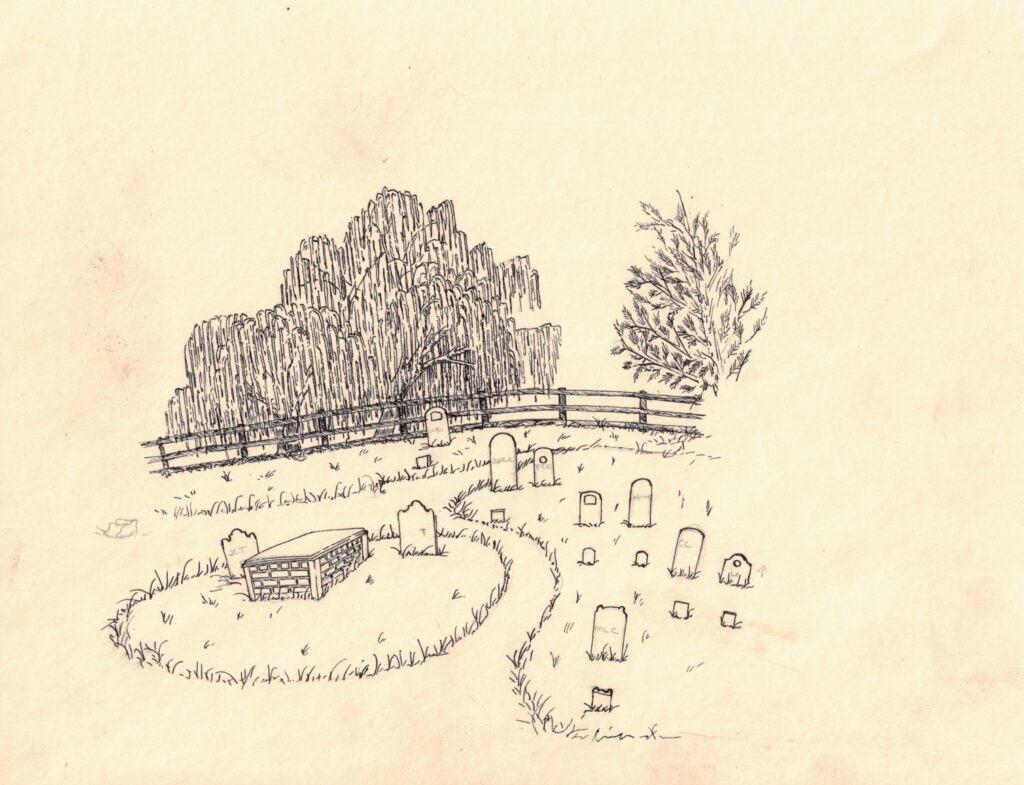
Resources
Archives.gov/research/military/civil-war
Hunt, L. Roane (N.D.) Unpublished Catlett Family genealogy
NPS.gov/Civil War
Stubbs, William Carter (N.D.) A history of two Virginia families transplanted from County Kent, England : Thomas Baytop, Tenterden, 1638 and John Catlett, Sittingbourne, 1622. New Orleans, La. Retrieved on 4 July 2021 from http://sites.rootsweb.com/~vacfrede/Catlett%20family.pdf
U.S. Census Records, 1850, 1860, 1870
Endnotes
[i] John T. Catlett appears as a soldier from Virginia in the 6th and 12th Infantry on the National Park Service’s Civil War database at https://www.nps.gov/civilwar/search-soldiers.htm, which both note his regiment as the 31st Infantry, about which there is no known history. Dr. John T. Catlett moved to Kentucky where a grave marker notes he was in the 6th Virginia Infantry.
[ii] The introduction to the 1965 National Archives microfilmed copies of the Prisoner of War Records notes that compilation of Confederate soldier’s service records did not begin until 1903 and that “In the volumes there is vast duplication of names of prisoners and information relating to them. Many discrepancies occur in the spelling of names, information regarding military organizations, dates of capture, and other data.” Therefore, the cavalry regiment assignment for prisoner W.B. Catlett may be in error.


This is a very, very interesting article. Since my mother’s family was from Gloucester County, and many served in the Confederate military, I found this article to mirror my relatives lives and what they endured during the Civil War and afterwards. Recently I had the opportunity to visit Point Lookout, Md. prison camp area. I was very impressed that the State has a very large and interesting memorial to the men who were imprisoned there as well as the names of those men who died there. There are even flags of each southern state whose men died there. I encourage everyone to visit this memorial, as well as old Saint Mary’s, the oldest town in Maryland
Thanks, Warren. I visited Point Lookout and Saint Mary’s a few years ago too. So interesting.
Another well-written tale, Sara.
Thanks, Mike!
Sara, thanks so much to you and others for all of your research and for writing such an interesting history. This is what makes genealogy so much fun!
P.S. You might want to check the spelling of Frances, the first word in the third paragraph.
Many thanks!
Thanks! I agree that genealogy is fun and quite addictive. And we caught that misspelling too!
Great genie article Sara! Thank you for sharing!
Thank you, Anne!